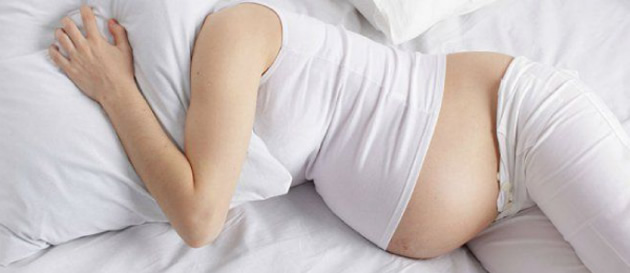
When a woman is about to go into that sweet period which is pregnancy, is led to face many small great choices: what to eat, what to wear, what cream or cosmetics to use, but above all how to sleep.
Sleeping well and properly is a crucial aspect for the health of both the future mother and the unborn child and to do that you need the right mattress. So how to choose it?
SLEEP DISORDERS IN PREGNANCY

Pregnancy is a beautiful and very special time in a woman's life that, together with obvious joy, it sometimes leads to some disorders. One of the most complained annoyances by pregnant women and perhaps one of the heaviest since it affects the most precious rest, is insomnia. The changing hormone levels that increase in the body (especially that of progesterone), but also any other nutritional deficiencies (especially iron, minerals, potassium and magnesium), added to a kind of psychological difficulty which comes from the idea that a new being is growing inside her, help to give the expectant mother a feeling of general fatigue. All these reasons, summed to the frequent need to go to the bathroom during the night because of the pressure of the fetus on the bladder, the woman sleeps less and badly. It is, therefore, necessary to try to limit the sleep disorders in pregnancy aiming to implement a whole series of expedients.
HOW TO CHOOSE THE MATTRESS

Facilitate the sleep trying to raise the comfort level as much as possible: this is the first goal that must be taken into account when choosing the most suitable mattress for the woman who is expecting a baby. Obviously, the choice of the mattress is very personal and putting it personally to the test is, as always, the best way to make sure that the choice is the most correct one. The perfect mattress for pregnancy must properly carry out the function of supporting a body in continuous evolution, which rapidly increases in weight and volume and loses its normal and usual balancing. Inevitably, this natural mutation in balance invalidates the classic references that give different weights and portions to the different parts of the body: head, shoulders, back, pelvis, legs. A good mattress, therefore, must be able to better adapt to the various changes of the body, it must promote blood circulation mainly on ankles and legs (two body parts particularly stressed during pregnancy), support the pelvis and combat the onset of a possible back pain. In addition, the movements that become more tiring and awkward must be facilitated by a mattress that is neither too soft nor too hard, avoiding the typical "trap" effect of some mattresses that, during the night, tend to excessively mold itself around the body , making movements difficult and causing annoyance and impatience.
In summary, during pregnancy, a good mattress must have these characteristics:
SUPPORT THE BODY AND THE CONTINUE MUTATIONS OF FORM AND WEIGHT
WELL ADAPTABLE TO THE BODY CHANGES
PROMOTE BLOOD CIRCULATION (PARTICULARLY IN THE LEG AND ANKLE)
FACILITATE MOVEMENTS AT NIGHT
TIPS

In addition to choosing a good mattress, some small steps should be observed to better address both the hours of the day or night. Here is what:
- Be aware of what you eat and do exercise to ward off the risk of leg cramps;
- Avoid heavy foods especially in the evening;
- Drink herbal tea or a cup of warm milk before bedtime to help sleep;
- Avoid caffeinated drinks especially before going to bed;
- Make the bedroom as relaxing as possible and with a comfortable temperature;
- Read a good book or listen to relaxing music before going to bed;
- Wear comfortable pajamas or a nightgown;
- Sleeping on your left side with your legs slightly bent is the best position because this prevents the fetus to put pressure on internal organs like the liver and kidneys and even to improve blood circulation.
